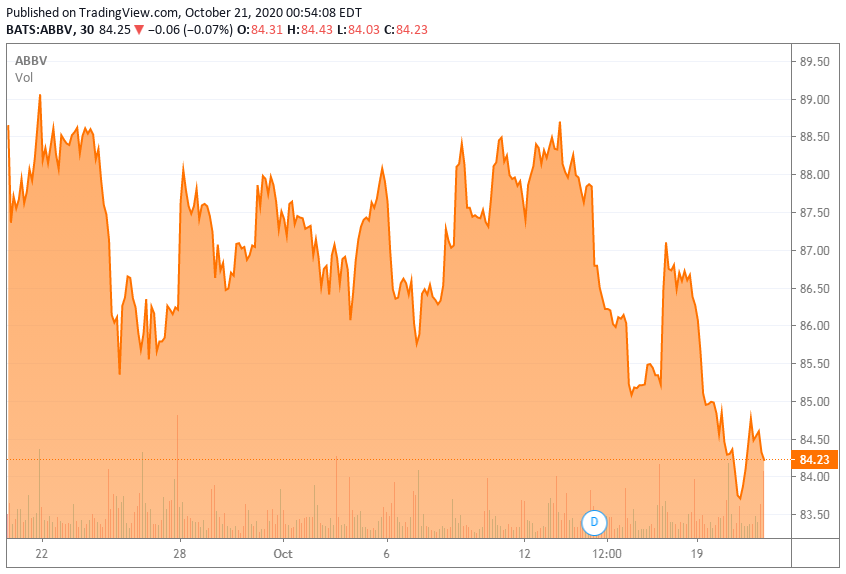
- AbbVie stock looked to have strong momentum in July, but Q2 results triggered a slide from $100, to $84 at the the time of writing.
- Q220 results included partial results from Allergan assets after AbbVie’s $63bn acquisition. Revenues were up 21% qoq, but AbbVie made a first net loss since Q418.
- Q3 results – due in 2 weeks’ time – will provide a clearer picture of the state of play at the company. Investors should pay close attention.
- The market is bearish on AbbVie’s debt leverage and the fact that $19bn-selling Humira goes off patent in the US in 2023.
- It is going to be tough for the stock to break $100 despite the fact the company’s shares are worth paying >$130 for, but it ought to happen over the longer term. Plus, there is a sector-leading dividend. I am still bullish.
- Looking for a portfolio of ideas like this one? Members of Haggerston BioHealth get exclusive access to our model portfolio. Get started today »
Investment Thesis
When I last updated on AbbVie (NYSE:ABBV) back in July, its stock price had momentum and had just touched $100 – its highest price since May 2018. After the mid-March stock market sell-off caused by the coronavirus outbreak dropped the pharma’s price from $95 to $65, AbbVie recovered its losses more rapidly than its Big Pharma sector rivals, and I felt that this could be a turning point for the company, which traded at a significant discount to my calculated fair value price of >$145.
Instead, AbbVie’s momentum stuttered and then reversed – over the past 3 months, the stock price has declined by 14% – only Gilead Sciences’ (GILD) shares have fared worse over the same time period.
AbbVie stock price performance past 3 months vs sector rivals & S&P 500. Source: TradingView.
In my last note, I compared AbbVie with Bristol Myers Squibb (NYSE:BMY). Both companies have recently made a mega-money acquisition – in BMY’s case, it was the $74bn acquisition of Celgene, and in AbbVie’s case, a $63bn deal for Allergan – and as a result, both companies carry a significant amount of debt on their balance sheets – BMY reported total liabilities of $79.3bn as of Q120, whilst AbbVie reported a figure of $110bn as of Q220. Like AbbVie, BMY stock – valued at $60 at the time of writing – also trades at a significant discount to my calculated fair value price of ~$100.
It seems that AbbVie’s momentum has been checked by the same market negativity that prevents BMY stock from breaking out beyond the $60-$65 range, as I believe it should do, which casts doubt over whether AbbVie stock can break out beyond its own glass ceiling of $100 – at current price of $85, this may seem less likely than it did a few months ago.
The reality is that investors are having a hard time seeing beyond a debt to equity ratio of 5.9x – comfortably the worst in the Big Pharma sector – despite the >$15bn per annum boost to revenues that the Allergan acquisition is expected to bring in. Allergan – a loss-making company with a mixed bag of assets – may boost the top line, but could have a detrimental effect on the bottom line – as it did in Q220, AbbVie’s first loss-making quarter (on a GAAP basis) since Q418.







